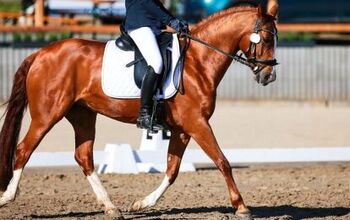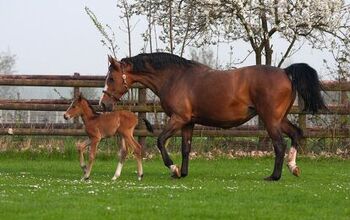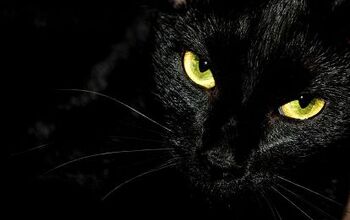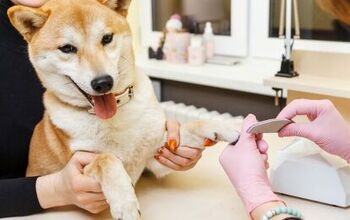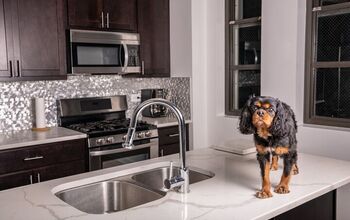Hanoverian Horse


About Hanoverian Horse
The Hanoverian horse breed is one of the oldest of all of the warmblood horses, as its history dates back to the 17th century. At that time, Neapolitan, Oriental, and Spanish stallions were being imported into Germany. There, the horses were bred with the country’s local mares to develop the Holsteiner.
King George II of England, who was also the Elector of Hanover, was the first person to breed the Hanoverian Horse. He was responsible for founding the Stallion Depot at Celle in Germany, using 14 Holsteiner stallions that he selected and bred with Thoroughbred horses in order to lighten the build while increasing stamina. The offspring were meant to be utilized as cavalry horses, as well as carriage horses and animals that would work in the fields. Later, more Thoroughbred blood continued to be introduced into the bloodline, thereby making this equine breed increasingly light, agile, athletic, and graceful.
The Hanoverian horse breed is one of the oldest of all of the warmblood horses, as its history dates back to the 17th century.
If you look at the history of the Hanoverian horse breed, you will realize that this horse went through several changes throughout the years as the breed was altered to suit the people’s need for a more agile and a lighter horse. Even though the breed’s evolution started in 1735 in Celle, Germany, over the next century, Andalusian, Holsteins, and Neapolitan horses were used, and later the Thoroughbred and Cleveland Bay were included.
In 1888, the Hanoverian breed was officially established, and it was considered one of the top warmblood horse breeds.
The Hanoverian Horse is now a renowned equine breed around the world. It has successfully performed at the Olympics in events such as dressage and show jumping, and the breed is regulated by the Society of Hanoverian Warmblood Breeders in Germany.
Hanoverian horses are known for being willing animals, as well as sensible, intelligent, and bold. They are multi-talented and easy to train, as they learn quickly and are athletic and strong.
Because this is a warmblood horse breed, these animals are reliable, as well as gentle. They also make wonderful companions to all levels of horse owners and riders, though individuals with at least some experience in equine care will work best with this breed.
The Hanoverian Horse has great speed, endurance, and agility, combined with fine movements and easy control.
The Hanoverian Horse has great speed, endurance, and agility, combined with fine movements and easy control, so it is an ideal horse for riders of all skill levels.
These horses are also fairly muscular, featuring a flat coup, good bone length, and powerful limbs. The eyes of this horse are alert, the head is medium in size and light in weight, and the neck is long. The breed is known for having large, sloping shoulders, and because these horses are bred for sport, the conformation of their haunches is important.
Overall, this particular equine breed is robust, sturdy, and elegant. They have a strong back, athleticism, and a body that is built for being trained for work or performance.
Hanoverian horses come in all solid colors, such as gray, brown, black, bay and chestnut.
These horses should not have too much white in their coat, though it is common to encounter them with white markings on their face, in patterns such as blaze, stripe, star, and more. You may also see white markings on the bottoms of the legs, to the knee. However, these horses should not have cremello, palomino, or buckskin patterns.
Hanoverian horses come in all solid colors, such as gray, brown, black, bay and chestnut.
As with all other horse breeds, you should get into a habit of grooming your Hanoverian regularly, preferably every day. This will ensure that the coat will remain healthy and clean, and that the animal will look great, especially if you are going to take it into sporting competitions and public performances.
Get a horse grooming kit together that contains a hoof pick, brushes that have soft bristles, brushes with stiff bristles, a curry comb, and a comb for the mane and tail. Then use the hoof pick to remove all of the debris and dirt from the horse’s hooves. As you do that, check for any injuries.
Next, use your curry comb and your stiff-bristled brush to comb the entire horse’s body to remove debris, dirt, and loose hair. Using the soft brush, you can then comb through the entire coat again, as well as the face, to make sure you remove any additional dust. Finally, untangle and comb through the tail and the mane.
Photo credit: Abramova Kseniya Romanovna/Bigstock; Melory/Bigstock; Igor Borodin/Bigstock

Lisa Selvaggio is a freelance writer and editor, and our resident cats-pert, with certifications in pet nutrition and pet first aid. She enjoys producing content that helps people understand animals better so they can give their pets a safe and happy home.
More by Lisa Selvaggio









